Where Can I See Us Woodstoves on Display Near Me
Find these visible planets in February 2022:
Venus
Jupiter
Saturn
Mercury
Mars
Here's what you'll find in this article:
Visible planets, stars, the moon, charts and more
February 2022 visible planets in depth
The moon's monthly journeying
February 2022 heliocentric solar system
Visible planets, stars, the moon and more

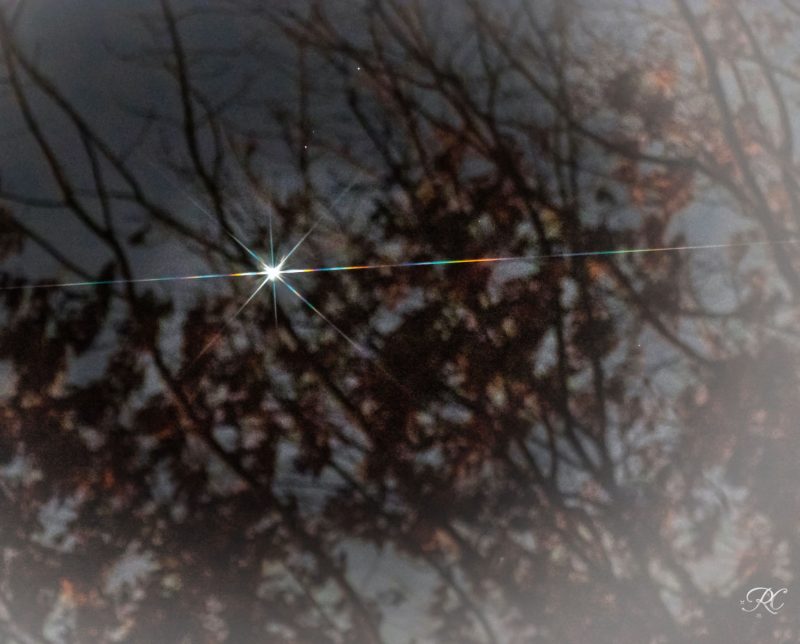

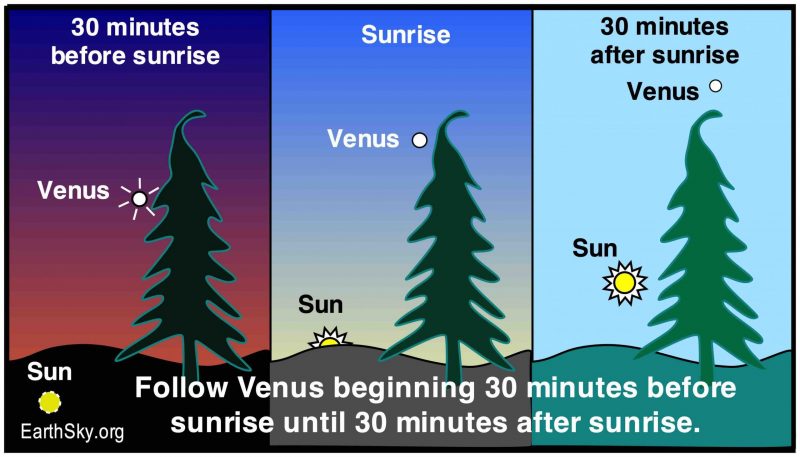
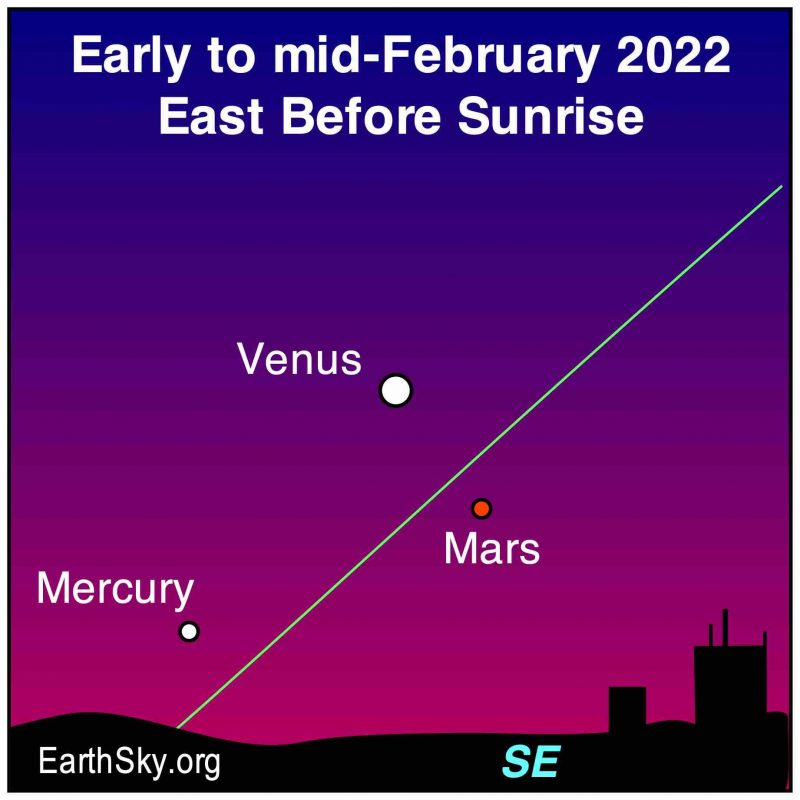

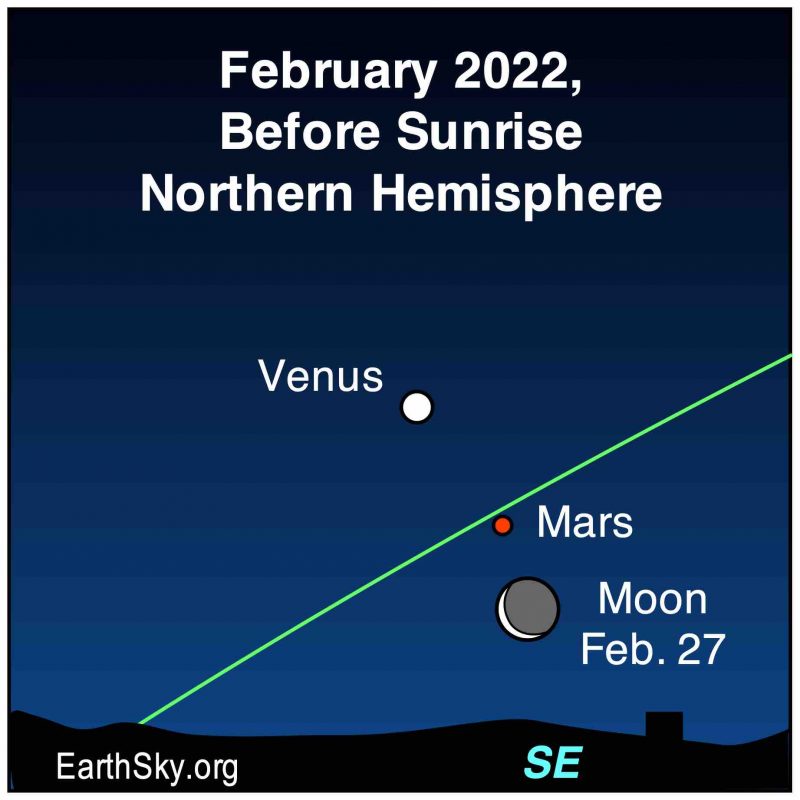

EarthSky's 2022 lunar calendars are bachelor at present! We're guaranteed to sell out, so get i while you tin can.
February 2022 visible planets in depth
Also meet the indispensable Observer's Handbook, from the Royal Astronomical Society of Canada
Jupiter, the 2nd-brightest planet, is the simply visible evening planet in early February. Yous'll discover it in the sunset management, still shining brightly although at present very near the sunset glare. By mid-February, y'all'll all the same spot Jupiter, just above the dusk horizon, in very bright twilight, presently afterwards the sun goes down. In the days and weeks after that, the behemothic planet becomes lost in the sunset glare.
Before information technology disappears, on the evening of February ii, be certain to await outside to take hold of the young moon – a waxing crescent – hanging virtually Jupiter in the twilight heaven.
Jupiter volition reach its superior conjunction (when it'due south most straight behind the sun as seen from Earth) on March 5, 2022.
Saturn will reach superior conjunction on Feb 4. In other words, in February, the sun and Saturn are traveling together across the sky during the day. Why? Because the planet Saturn is traveling behind the sun as seen from the planet World. Saturn has been gone from our evening sky since about mid-January. We won't see it again until it returns to the dawn sky in March.
By Apr 2022 mornings, nosotros'll see both Saturn and Jupiter in the due east before dawn, beginning their 2022 cycle of visibility in our sky. This cycle for these outer planets, by the way, is driven mostly by the length of Earth's twelvemonth-long orbit around the sun.
In 2022, Saturn will reach its opposition – when Earth passes between it and the sun – on August xiv. Jupiter'south opposition will come up on September 26.
Venus Subsequently having moved between Earth and the sun on Jan 9, Venus now shines brilliantly in our morn sky every bit dawn's light begins to break. It will exist at its brightest for all of 2022 on the mornings around Feb 8, an effect called greatest brilliancy by astronomers. Don't miss Venus before sunup on these early on February mornings. What a beautiful, blazing "forenoon star" it is.
Throughout February, Venus appears equally a very thin crescent world. In other words, its "day" side is facing generally away from us at present. Aim a pair of well-focused binoculars toward Venus. You'll see the crescent e'er points toward the sun, i.e., the tips of its crescent – its "horns" – point directly abroad from the lord's day.
Throughout February, the crescent Venus will wax larger. It'll be showing us more of its lighted face up every bit this Earth-sized planet swings farther to the west of the dominicus, before reaching its greatest western elongation on March 20.
Because Venus is so bright in early on February, it's a great time to try to spot it in the daytime. Simply follow the planet equally sunrise nears, then keep an eye on it later the sun pokes above the horizon. (Be sure non to look at the sun!) To make this easier, position yourself and so that Venus is placed merely to a higher place a foreground object such as a tree or utility pole.
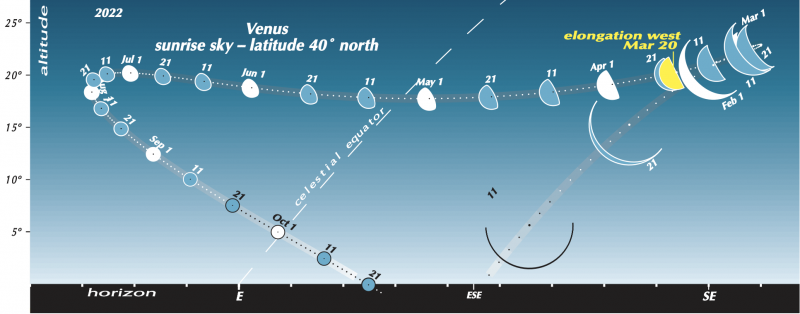
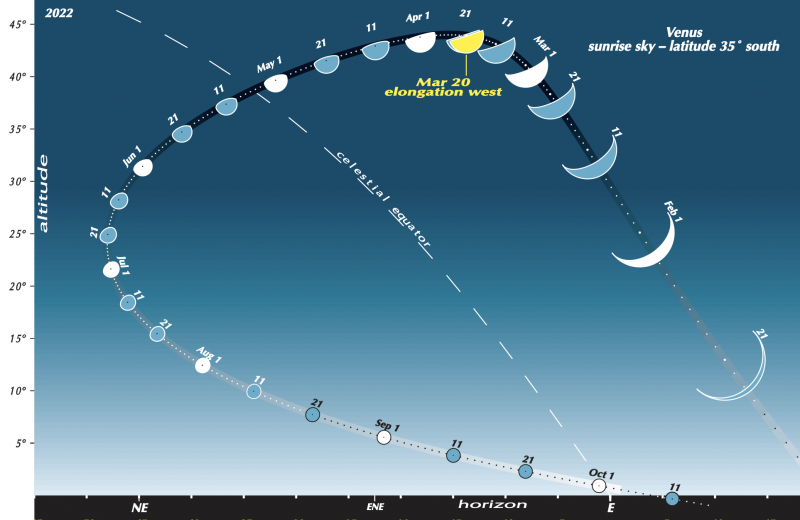
Mercury makes a brief appearance for Northern Hemisphere skywatchers, low in the e before sunrise, beginning in the second calendar week of February. On February xvi, 2022, Mercury reaches what astronomers telephone call greatest western elongation, at which it lies at its greatest angular distance from the sunday as viewed from our earthly vantage signal. Later on February 16, the bright morning twilight quickly overpowers Mercury's diminishing calorie-free. It won't be easily constitute from northerly latitudes in late February.
Observers in the Southern Hemisphere, on the other paw, will have a nifty display of Mercury throughout February. The trivial planet will be well in a higher place the sunrise horizon before sunup, in darker twilight. Then, from the Southern Hemisphere, Mercury volition exist easier to spot. After February 21, Mercury shines very low, merely information technology still should exist visible for those observers who have a clear southeastern horizon. On the last morning of the month, the sparse crescent moon – what astronomers call an "old" moon – volition lie immediately higher up Mercury, and Saturn volition exist below it. This will be an enchanting scene to view, specially through binoculars!
Mars, like Saturn, was traveling behind the lord's day from Globe. By late December 2021, Mars was just visible, with difficulty, in the management of sunrise, before the sun came up. And throughout January, it was the same. Mars has been seen very depression in the east before sunrise, but only with some difficulty. Nigh people never saw information technology at all – haven't seen information technology yet – while gazing at blazing Venus in the aforementioned region of the heaven.
But Mars grows slowly in brightness throughout February, as it slowly, very slowly, climbs out of the sunrise. Information technology is ever thus for Mars when it begins a new bicycle of visibility. Mars spends February 2022 perched directly s of brilliant Venus.
Mars will be betwixt Venus and the pretty crescent moon on the morn of Feb 27.
These early-forenoon sightings – so virtually the dominicus – can be catchy. If y'all look also early, Mars won't take risen nonetheless. If y'all wait also late, bright twilight will drown Mars from view.
Don't allow Mars fool you. Despite its inconspicuousness now, information technology'll grow brighter – and brighter – over the first 11 months of 2022, in other words for most of the twelvemonth. It'll be brightest equally Earth passes between Mars and the lord's day in December 2022.
The moon'south monthly journey
Throughout the month, the moon, with its changing phases, passes almost planets and stars, creating interesting, even captivating scenes in the sky.
February two: Immediately after dusk, the sparse waxing moon floats below Jupiter low in the southwestern sky.
February 3: The sparse waxing crescent moon glows just south of invisible Neptune.
February vii: One twenty-four hour period before information technology reaches first quarter (half or "D" shaped phase), the moon lies direct east of Uranus.
February 9: The waxing gibbous moon glows only northward of the red star Aldebaran.
February ten and eleven: The vivid waxing gibbous moon sits above the heaven's most well-known constellation, Orion.
February thirteen: Nearing its full phase, the moon lies in a line with the two twin stars of Gemini, Castor and Pollux.
February xv: The bright full moon glows to the northeast of the brightest star in Leo, Regulus.
Feb 20: During the overnight of Feb 20, the moon, approaching third quarter, moves to the east of Spica, the brightest star in Virgo.
February 24: Subsequently it rises around 2 a.grand., the waning crescent moon is institute to the northeast of the vivid star Antares in Scorpius.
February 26: Earlier morning twilight brightens, the waning crescent moon forms an interesting elongated right triangle with Venus and Mars.
Feb 27: The sparse crescent moon forms a line with brilliant Venus and the much dimmer Mars in the morning sky.
February 2022 heliocentric solar organization
The dominicus-centered chart below comes from Guy Ottewell. You'll find charts like these for every month of 2022 in his Astronomical Calendar.
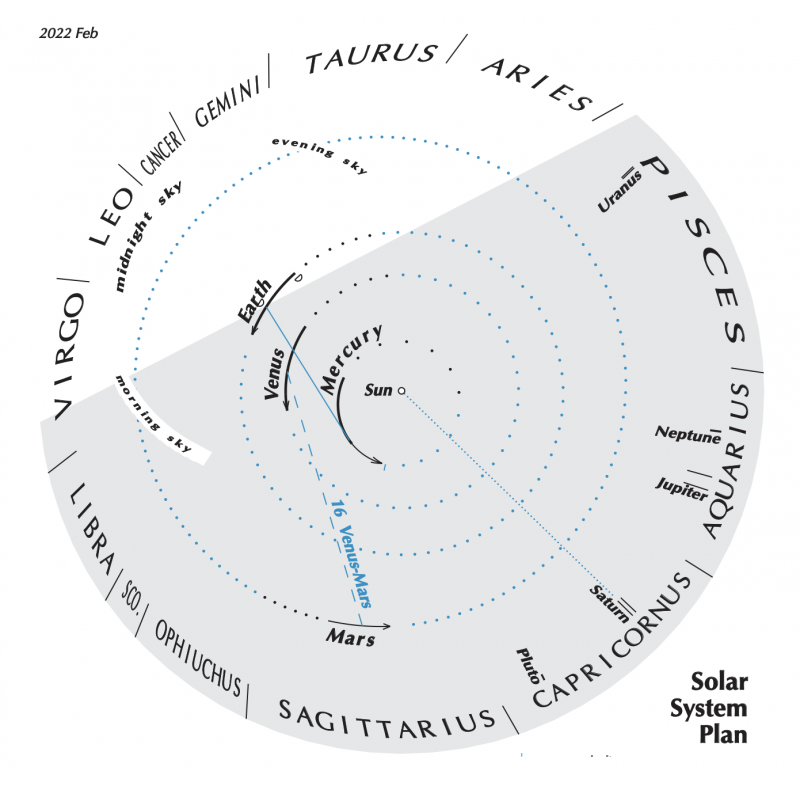
Some resources to enjoy
Don't miss anything. Subscribe to daily emails from EarthSky. It'southward free!
Visit EarthSky's Best Places to Stargaze to find a dark-heaven location near you.
Postal service your planet photos at EarthSky Customs Photos.
Visit Stellarium-Web or TheSkyLive for precise views from your location
The Old Farmer'south Annual provides specific planet rise and set up info (U.South. and Canada)
Timeanddate.com provides specific planet rise and set info (worldwide)
Click here for recommended almanacs to notice out precise rise and fix times
Translate Universal Time (UTC) to your fourth dimension
Read: Ecliptic is the sun's path in our sky
Read: Planet-observing is easy. Summit tips hither
Cheque out the indispensable Observer's Handbook, from the Majestic Astronomical Guild of Canada
Dorsum past popular need! Guy Ottewell's Astronomical Calendar for 2022
Great resources and beautiful wall chart: Guy Ottewell'south zodiac wavy chart

Bottom line: Of the visible planets, just the gas giant Jupiter is upwardly in the evening in early February 2022, near the dusk bespeak. It'll be near the young moon – a slim waxing crescent – on February 2. Around mid-February, meet 3 rocky worlds – Mercury, Venus and Mars – together in the due east earlier sunup. Afterwards, Mercury retreats into the dawn. And Saturn? Information technology'southward behind the dominicus now, traveling across the sky with the sun during the day. Visible planets in February 2022 – and more – hither.
Assist EarthSky keep going! Donate now.
hendersonplingers.blogspot.com
Source: https://earthsky.org/astronomy-essentials/visible-planets-tonight-mars-jupiter-venus-saturn-mercury/
0 Response to "Where Can I See Us Woodstoves on Display Near Me"
Postar um comentário